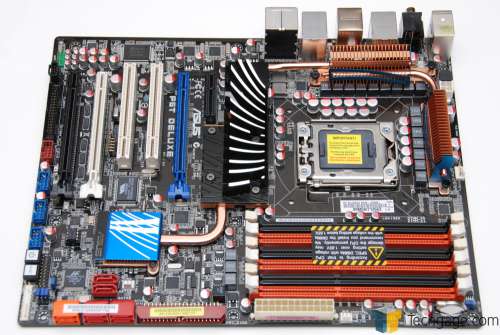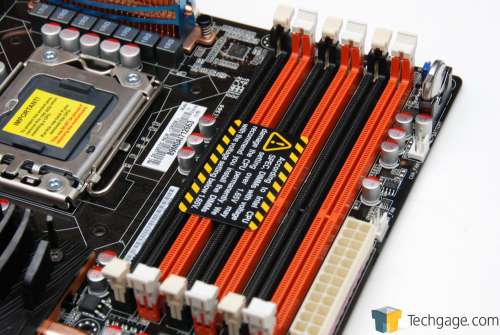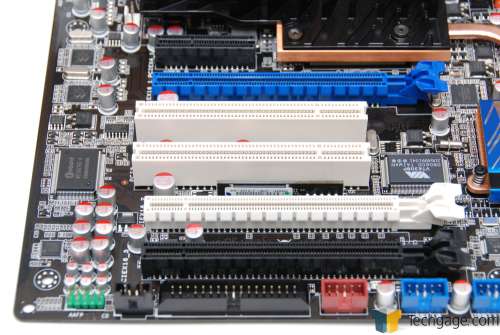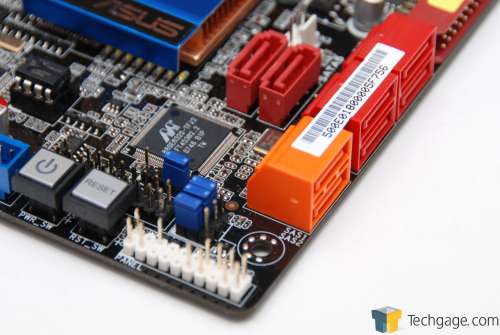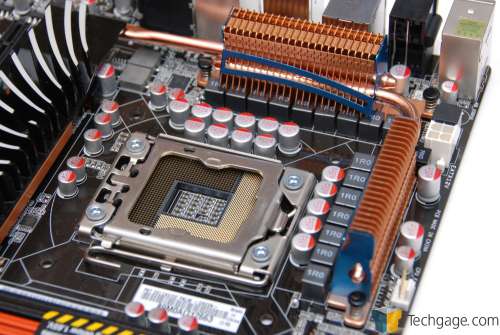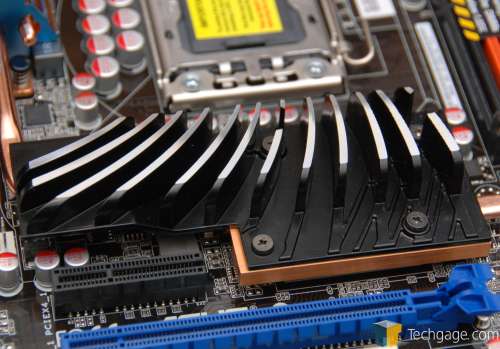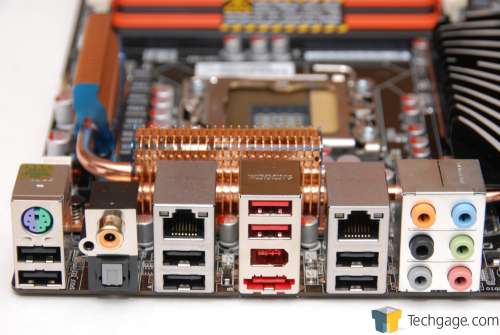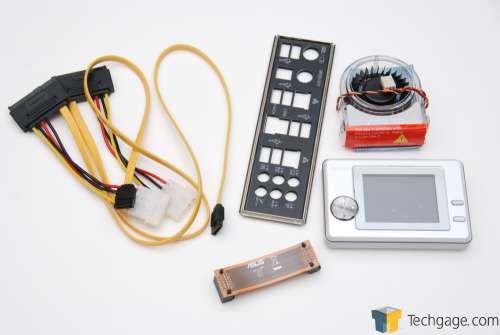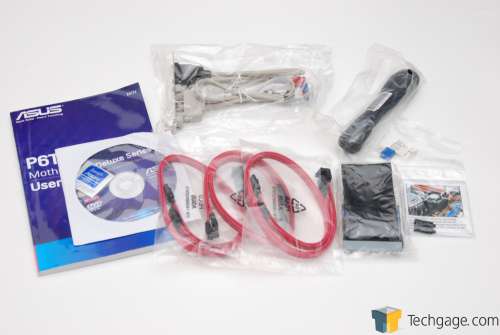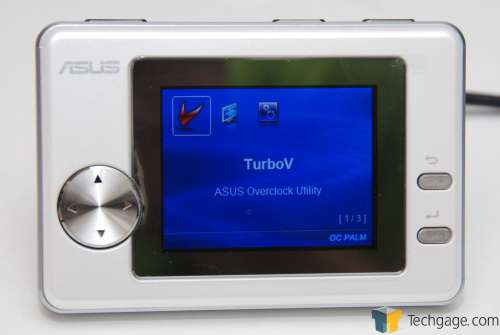- Qualcomm Launches Snapdragon 4 Gen 2 Mobile Platform
- AMD Launches Ryzen PRO 7000 Series Mobile & Desktop Platform
- Intel Launches Sleek Single-Slot Arc Pro A60 Workstation Graphics Card
- NVIDIA Announces Latest Ada Lovelace Additions: GeForce RTX 4060 Ti & RTX 4060
- Maxon Redshift With AMD Radeon GPU Rendering Support Now Available
ASUS P6T Deluxe OC Palm Edition
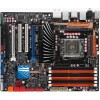
Need a solid motherboard offering for that brand-new Core i7 processor? ASUS’ first “mainstream” X58 board proves to be a true winner, offering a feature-packed and well-thought-out design, support for both CrossFireX and SLI, plentiful accessories and overclocking potential to keep even the most hardcore enthusiast pleased.
Page 1 – Introduction
Intel’s Core i7 processors are here, and if you are planning on making a purchase, your decision is going to made easier thanks to a few factors. First and foremost, having three processor models doesn’t offer much leeway in the decision-making process. The most cost-effective model is the Core i7 920, which at 2.66GHz and ~$319, becomes the most obvious choice for most people.
While three CPUs are easy to choose from, the selection for motherboards gets a little more complicated, but not by much. Currently, the only vendors I can find selling product on these shores are ASUS, Gigabyte, Intel and MSI. All except Intel offer two different models, each with a varying price-range. Today, we’re taking a look at ASUS’ “mainstream” model, the P6T Deluxe.
For the most part, this board shouldn’t be considered a “mainstream” product given it’s $300 price tag, but it’s not unlike any of the competition out there right now. ASUS also offers an “OC Palm” edition of the board, which features a small gadget used for Yahoo! widgets and overclocking. It tacks close to $40 to the price of the board though, so some may prefer to omit it.
Compared to the $400 Rampage II Extreme (which we will have a review for soon), the P6T Deluxe will be a much more attractive choice between the two for many people. Should it be the choice, though? Let’s find out.
Closer Look at ASUS’ P6T Deluxe
As we’d expect from ASUS, the P6T Deluxe is no slouch. It’s feature-packed (even without the OC Palm device), offers support for all of what the Core i7 / X58 platform brings to table, and though it’s a solid board for the regular consumer, it’s also targeted at enthusiasts, as we’ll see proof of in our look at the BIOS on the next page.
Like some of the other higher-end launch motherboards, the P6T Deluxe offers support for both CrossFireX and NVIDIA’s SLI… marking the first time that SLI has been available on a non-NVIDIA motherboard, aside from Intel’s one-off Skulltrail workstation board. It’s hard to stress just how great this is, because for so long, if you wanted SLI, you’d have no choice but to pick up an NVIDIA board. While their boards are solid offerings to begin with, being forced into them isn’t an ideal solution for anyone.
Thanks to this dual-capability, the upgrade path is far better than it would have been otherwise. If you pick up a single ATI GPU right now and decide to move up to NVIDIA SLI down the road, it’s possible, all without replacing the board. There are many reasons this will pay off to the consumer, so it’s good to finally see this as a reality.
Like ASUS’ previous “Deluxe” boards, this one features a dark brown PCB, a fair amount of copper and many connections, whether it be USB or S-ATA. Also, for those who love having great chassis airflow (and who doesn’t), you’ll be pleased to find multiple fan connectors placed around the board in convenient locations.
Most of the launch boards include six separate DIMM slots, and so does this one. For some reason though, ASUS has only specified 12GB as being the maximum, which is a little odd as X58 supports up to 24GB (which would equate to 6 x 4GB). It goes without saying that chances are good very few would need more than 12GB of RAM, but the lack of support is strange regardless.
Moving along to the PCI slots, we find three PCI-E 16x, one PCI-E 4x and two legacy PCI slots. These ports support both CrossFireX and SLI, both up to Quad-GPU (using two cards).
The board offers storage support for up to eight S-ATA devices, which is likely enough for most anyone who picks the board up. For those who crave speed more than overall density, the two orange ports can handle SAS drives. Personally, I really don’t think the increase in speed is worth the extra cash and lower density, but your opinion may vary. I’ll hold out for larger and more affordable SSDs, personally.
Both ASUS and Gigabyte are major supporters of extreme “power phase” solutions, and it’s proven here with 16+2 phases. The sixteen surrounding the socket are dedicated to CPU operation, while the two located towards the top-left corner are dedicated to the QPI/Memory. Overkill? Probably, but it might very-well improve our chances at fantastic overclocks.
This bulky heatsink takes care of the Northbridge, and can be further cooled with an add-on fan that’s not included. Screw holes are available for that specific purpose. For overclocking, this area is important to keep cool, although it’s less of an issue with stock clocks.
On the back I/O section we find a total of eight USB ports (two are red), one Firewire, one E-SATA, two LAN, audio including S/PDIF and also a PS/2 port that can be used for either a mouse or keyboard. Overall, functionality is one thing this board certainly doesn’t lack.
Let’s take a brief look at the included extras below. In the first image we can see SAS cables, the back I/O guard, chipset fan, SLI bridge and the OC Palm gadget, which is only included with the OC Palm Edition version of the motherboard.
Below you can see the various included cables, as well as the manual, driver DVD-ROM, USB cable for use with the OC Palm, Q-Connectors (makes connecting of the ATX connectors much easier) and also two screw pillars used for installing the small chipset fan, if you choose to purchase one.
Finally, here is a shot of the OC Palm in action. I didn’t test this out a great deal, but I can honestly say it’s not going to be for everyone. It works well and looks good, but I’m not sure how many people want something like this on their desk. It offers Yahoo!’s widgets support, so that’s a huge bonus, and for those who want a very unique way of overclocking, the option is here as well. ASUS is really trying to create a special package with this, and it’s good to see. It’s up to you to determine whether or not you need to opt for this edition of the board, though.
With that exhaustive look out of the way, let’s jump right into our look at ASUS’ very thorough BIOS, followed by our testing methodology and test results.
Support our efforts! With ad revenue at an all-time low for written websites, we're relying more than ever on reader support to help us continue putting so much effort into this type of content. You can support us by becoming a Patron, or by using our Amazon shopping affiliate links listed through our articles. Thanks for your support!




